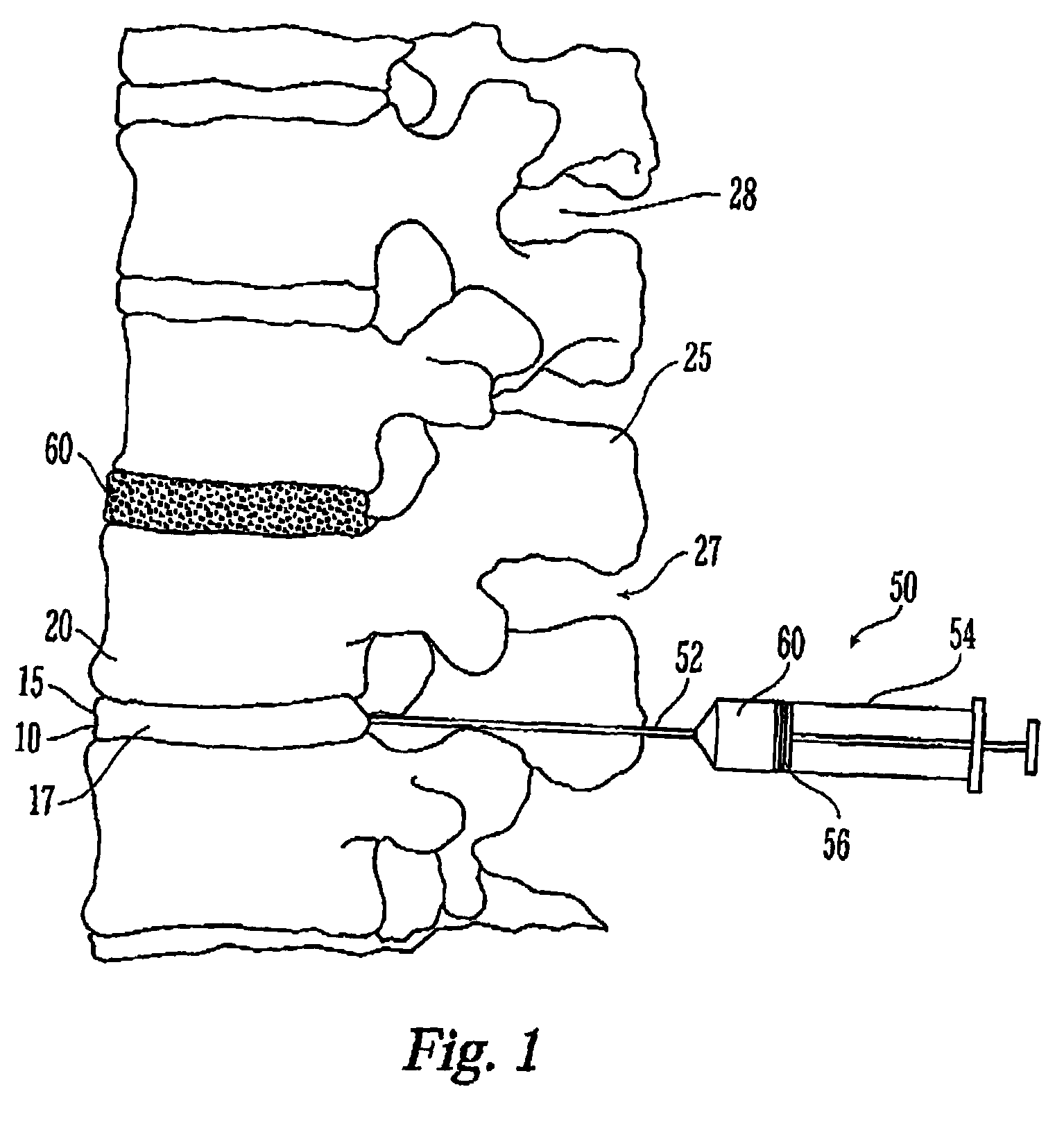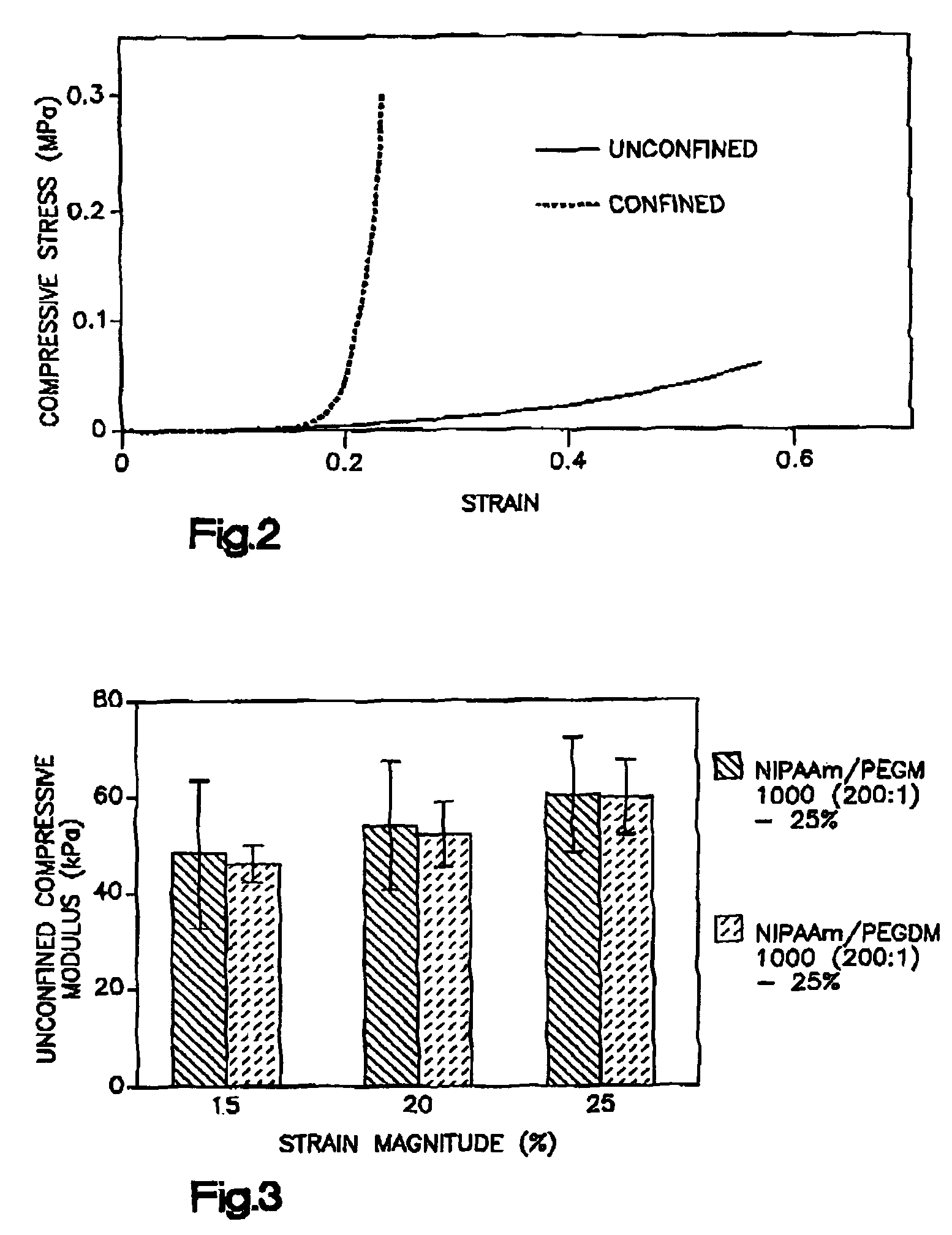Thermogelling polymer blends for biomaterial applications
- Summary
- Abstract
- Description
- Claims
- Application Information
AI Technical Summary
Benefits of technology
Problems solved by technology
Method used
Image
Examples
example 1
Preparation of PVA / PNIPAAm
[0043]PNIPAAm was synthesized through a free radical solution polymerization. The reaction was carried out at 60 degrees C. for 2 hours. After polymerization, methanol was evaporated and the resulting polymer was dried overnight in a vacuum oven. Excess monomer was removed by dissolving the dried polymer in water at room temperature and then raising the temperature to 50 degrees C. The water phase, containing the excess monomer, was then poured off. This process was repeated until all unreacted residual monomer was removed.
Example 2
Screening of Gelation of PVA / PNIAAm Blends
[0044]Screening studies were performed to help define regions of polymer concentrations that provide for thermogelling behavior. Initially, aqueous PVA solutions of 5, 10, and 15% w / v, and PNIPAAm solutions of 15, 25, 35, and 45% w / v were created. The PVA solutions were combined with PNIPAAm solutions in volumetric ratios of 1:1, 1:5, and 1:10. The two solutions were mixed to form a misci...
example 2
Screening of Gelation Properties of PEG / PNIPAAm Blends
[0046]Similar gelation screening was performed with PEG solutions of 5, 10, 25 and 50% w / v, and PNIPAAm solutions of 25 and 35% w / v with PEG molecular weight 4600 and with PEG solutions of 5, 10 and 25% w / v, and PNIPAAm solutions of 25 and 35% w / v with PEG molecular weight 8000. The PEG solutions were combined with PNIPAAm solutions in volumetric ratios of 1:1 and 2:1. The gelation behavior at physiological temperature is shown in Tables 2 and 3.
[0047]
TABLE 2Gelation screening of PEG MW:4600 / PNIPAAm blendsPEG:PNIPAAmPEG WM:46001:12:1PNIPAAm / 25 / 5 SSSPEG25 / 10SSConcentrations25 / 25SSS25 / 50LL35 / 5 SS35 / 10SS35 / 25SSS35 / 50LL
[0048]
TABLE 3Gelation screening of PEG MW:8000 / PNIPAAm blendsPEG:PNIPAAmPEG WM:80001:12:1PNIPAAm / 25 / 5 SSPEG25 / 10SSConcentrations25 / 25SSL35 / 5 SS35 / 10SS35 / 25SSL
example 3
Gelation Screening of PNIPAAm-Grafted PEG Polymers
[0049]PNIPAAM grafted PEG was prepared by solution polymerization of NIPAAM and PEG monomethacrylate (PEGMA). Polymers with varying ratios of the monomers were prepared. Solutions of 25, 30 and 50% w / v in water were prepared at room temperature. The gelation behavior at physiological temperature is shown in Table 4.
[0050]
TABLE 4Gelation Screening of PNIPAAM-Grafted PEG PolymersRatio ofSolution Composition w / v %NIPAAM / PEGMA25%30%50% 10:1LLSS 20:1SSSSSS 50:1SSSS100:1SSS500:1SSS
PUM
| Property | Measurement | Unit |
|---|---|---|
| Temperature | aaaaa | aaaaa |
| Temperature | aaaaa | aaaaa |
| Temperature | aaaaa | aaaaa |
Abstract
Description
Claims
Application Information
 Login to View More
Login to View More - R&D
- Intellectual Property
- Life Sciences
- Materials
- Tech Scout
- Unparalleled Data Quality
- Higher Quality Content
- 60% Fewer Hallucinations
Browse by: Latest US Patents, China's latest patents, Technical Efficacy Thesaurus, Application Domain, Technology Topic, Popular Technical Reports.
© 2025 PatSnap. All rights reserved.Legal|Privacy policy|Modern Slavery Act Transparency Statement|Sitemap|About US| Contact US: help@patsnap.com



